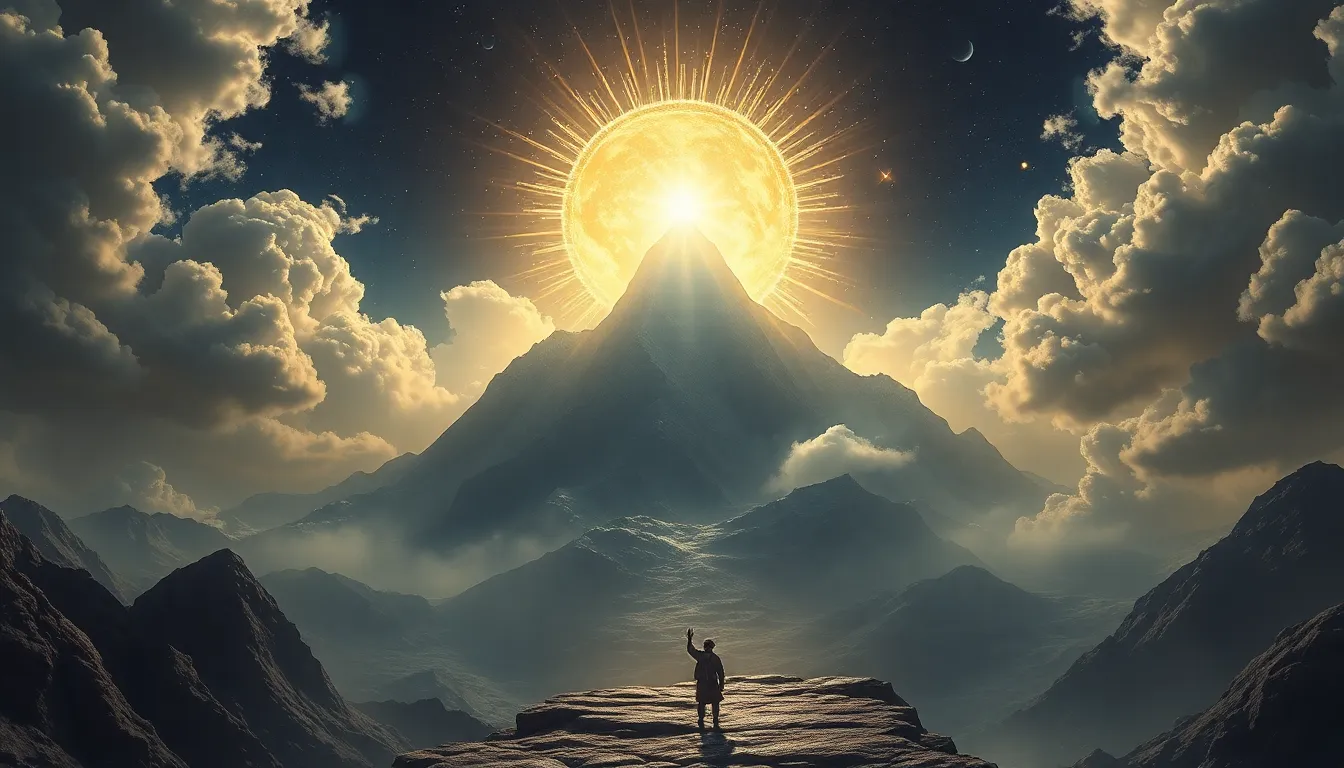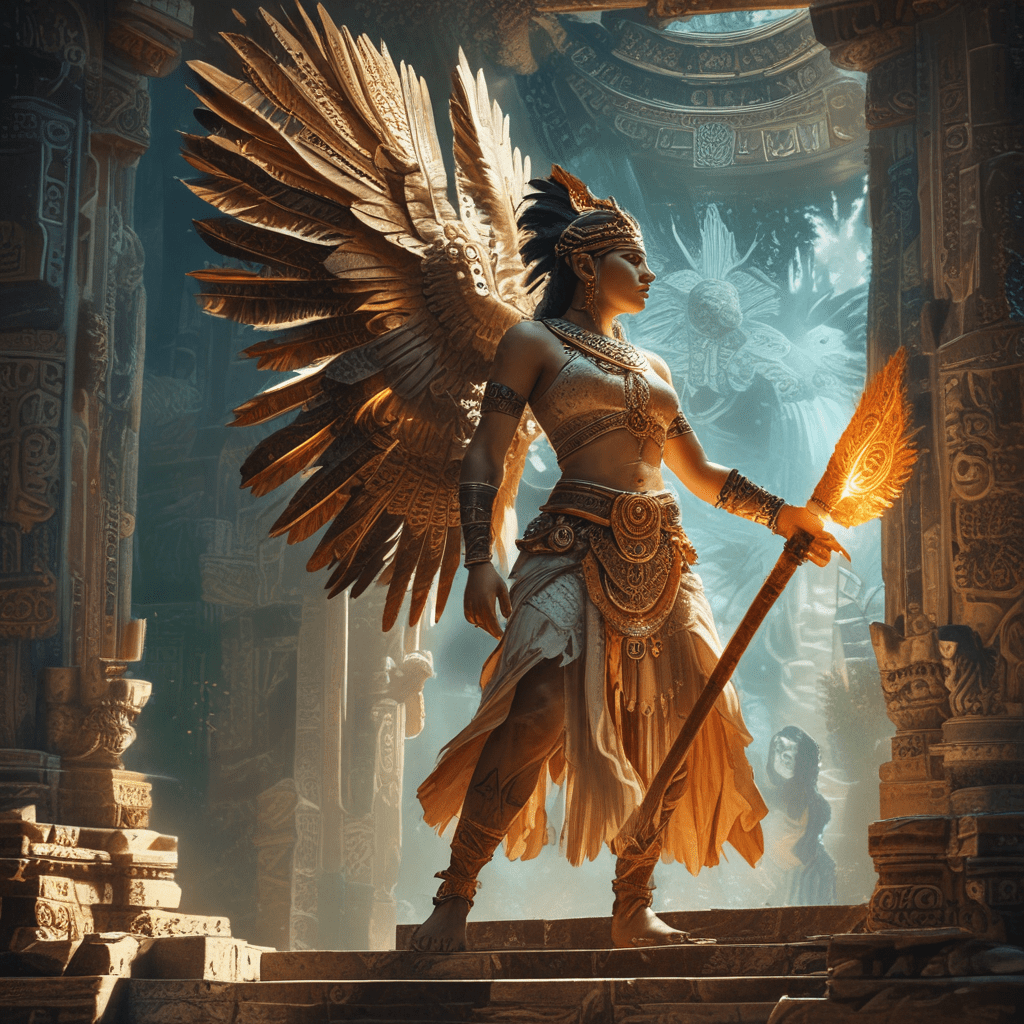The Mountain of the Sun God: Myths of Celestial Worship
Introduction to Celestial Worship
Celestial worship refers to the reverence and veneration of celestial bodies, particularly the sun, moon, and stars, by ancient cultures. These practices were deeply embedded in the spiritual and cultural life of societies, influencing their rituals, agriculture, and calendars. The Sun God, a prominent figure across various mythologies, symbolizes life, power, and the cycle of nature.
In many civilizations, the sun was considered a divine entity, embodying the principles of creation and destruction. The Sun God often represented a source of light and warmth, essential for sustaining life. This article explores the myths and rituals surrounding the Mountain of the Sun God, delving into the profound connections between celestial worship and various cultures.
Historical Background of the Mountain of the Sun God
Mountains have long been seen as sacred spaces, often linked to the divine. Many civilizations revered specific mountains as the dwelling places of their gods, particularly those associated with the sun. Key mountains that have been identified in sun worship include:
- Mount Olympus (Greece)
- Mount Huayna Picchu (Peru)
- Mount Sinai (Egypt)
- Mount Sumeru (Hindu cosmology)
The geographical significance of these mountains often corresponds with their cultural importance. For instance, Mount Olympus was not only the highest peak in Greece but also the mythical home of the Greek gods, including the sun god Helios. Similarly, the Incas considered Mount Huayna Picchu as a sacred site, integral to their sun worship practices.
The Sun God in Different Mythologies
The archetype of the Sun God appears in numerous mythologies worldwide, each with unique attributes and narratives. Some notable Sun Gods include:
- Ra – Egyptian mythology: The sun god who traveled across the sky in his solar boat, symbolizing rebirth and renewal.
- Inti – Inca beliefs: The sun god revered as the ancestor of the Incas, associated with agriculture and prosperity.
- Helios – Greek mythology: The personification of the sun, who drove his chariot across the sky.
- Surya – Hinduism: The sun god depicted as riding a chariot pulled by seven horses, representing the days of the week.
Despite their distinct cultural contexts, these deities share common themes of light, power, and life-giving energy, reflecting the sun’s critical role in sustaining human existence.
Legends Surrounding the Mountain of the Sun God
Many mountains are steeped in legends that highlight their connection to the Sun God. For example:
- Mount Olympus: In Greek mythology, it is said that the gods held their council atop this mountain, where Zeus, the king of gods, ruled from his throne.
- Mount Huayna Picchu: This mountain is often associated with the Inca sun god Inti, who was believed to have descended from the sun to bless the Inca civilization.
- Mount Sinai: According to the Bible, it was at this mountain that Moses received the Ten Commandments, symbolizing a divine connection between God and humanity.
These myths often encapsulate themes of creation, sacrifice, and divine connectivity, emphasizing the mountains’ status as sacred spaces where earth meets the divine.
Rituals and Practices of Celestial Worship
Ancient cultures performed various rituals to honor the Sun God, often taking place on or near sacred mountains. These rituals included:
- Offerings of food, drink, and symbolic items to appease the deities.
- Seasonal festivals aligned with solstices and equinoxes, celebrating the sun’s journey.
- Construction of temples and altars on mountain tops, believed to be closer to the heavens.
Astrology played a crucial role in these rituals, as ancient peoples observed celestial movements to determine the timing of their celebrations. The alignment of astronomical events often guided agricultural practices, highlighting the interconnectedness of nature and spirituality.
Symbolism of the Mountain in Sun Worship
The mountain serves as a powerful symbol in sun worship, representing ascension, divinity, and enlightenment. It embodies the journey towards the divine, where the earthly and celestial realms meet. Throughout history, mountains have been depicted in sacred texts and artistic representations, symbolizing:
- The ascent of the soul towards enlightenment.
- The connection between humans and the divine.
- The eternal cycle of life and rebirth.
Architectural and artistic representations of mountains can be seen in various cultures, from the ziggurats of Mesopotamia to the pyramids of Egypt, each reflecting their society’s reverence for the Sun God.
Cultural Transmission of Myths and Worship
The myths surrounding the Mountain of the Sun God have transcended time and geography, influencing subsequent cultures and religions. The legacy of these myths can be seen in modern spiritual practices that emphasize nature worship and the cyclical patterns of life. The themes of light, renewal, and divine connection continue to resonate in various belief systems, reflecting the enduring impact of ancient celestial worship.
The Role of Nature in Sun God Worship
The natural environment played a vital role in the worship of the Sun God. The worship practices were often shaped by the local climate and geography, which influenced the myths and rituals. For example:
- In arid regions, the sun was revered for its life-sustaining properties, leading to elaborate sun worship rituals.
- In temperate climates, the changing seasons dictated agricultural festivals celebrating the sun’s cycle.
This relationship between nature and worship underscores the importance of the environment in shaping human spirituality and beliefs.
Contemporary Interpretations of Sun Worship
In contemporary society, there is a growing interest in rediscovering ancient sun worship practices. Modern spirituality often draws inspiration from these ancient beliefs, emphasizing a connection with nature and a reverence for celestial bodies. This revival is evident in:
- Ecological movements that promote harmony with the natural world.
- Spiritual practices that incorporate rituals aligned with solar events.
- Artistic expressions that reflect the beauty and power of the sun.
This resurgence highlights the relevance of ancient sun worship in addressing contemporary ecological and spiritual challenges.
Conclusion: The Enduring Legacy of the Mountain of the Sun God
The Mountain of the Sun God remains a potent symbol of humanity’s quest for understanding the divine and our relationship with nature. These ancient beliefs continue to offer valuable insights into our spiritual and ecological consciousness. As we navigate the complexities of modern life, the myths of celestial worship remind us of the importance of preserving and understanding our shared heritage for future generations.



